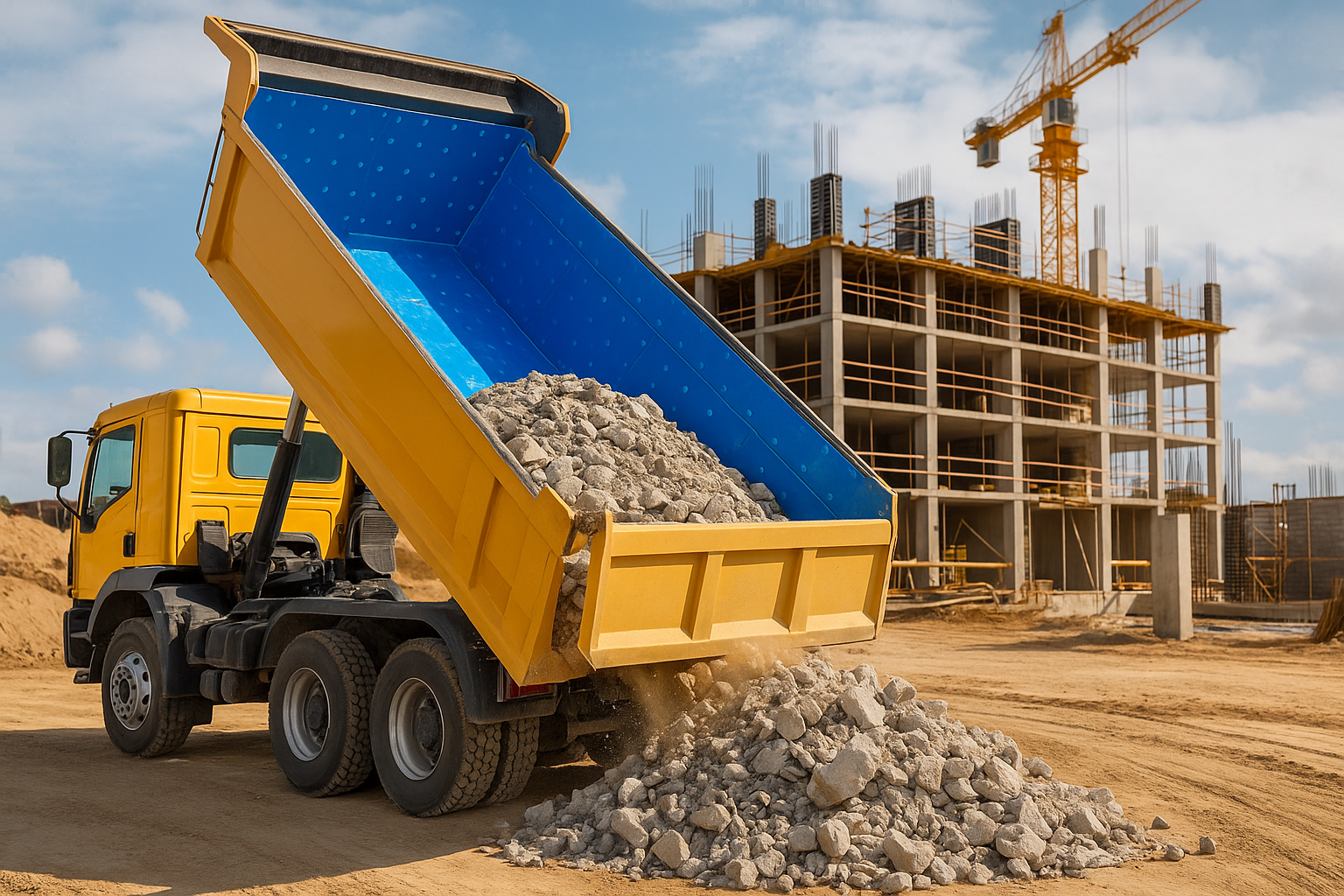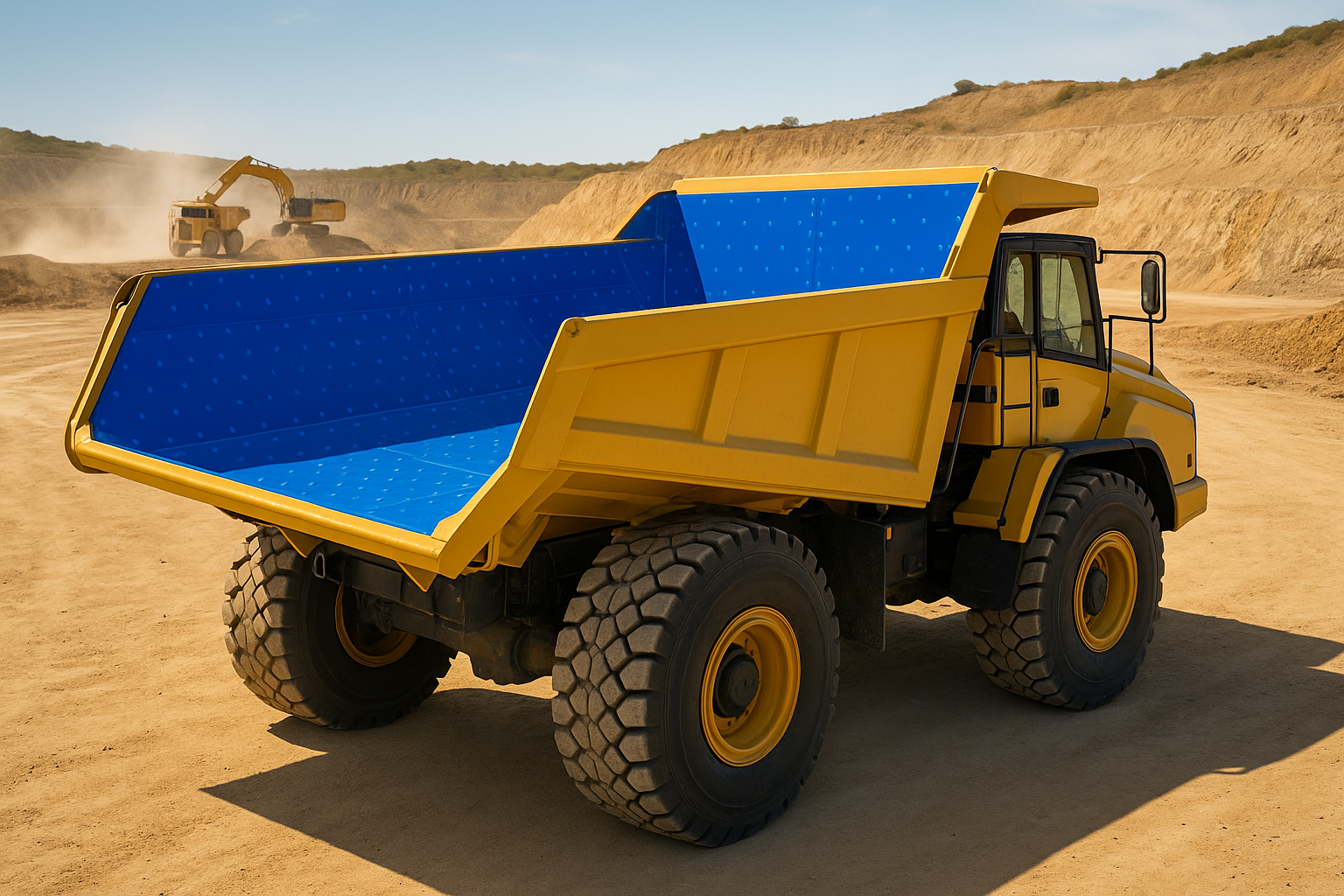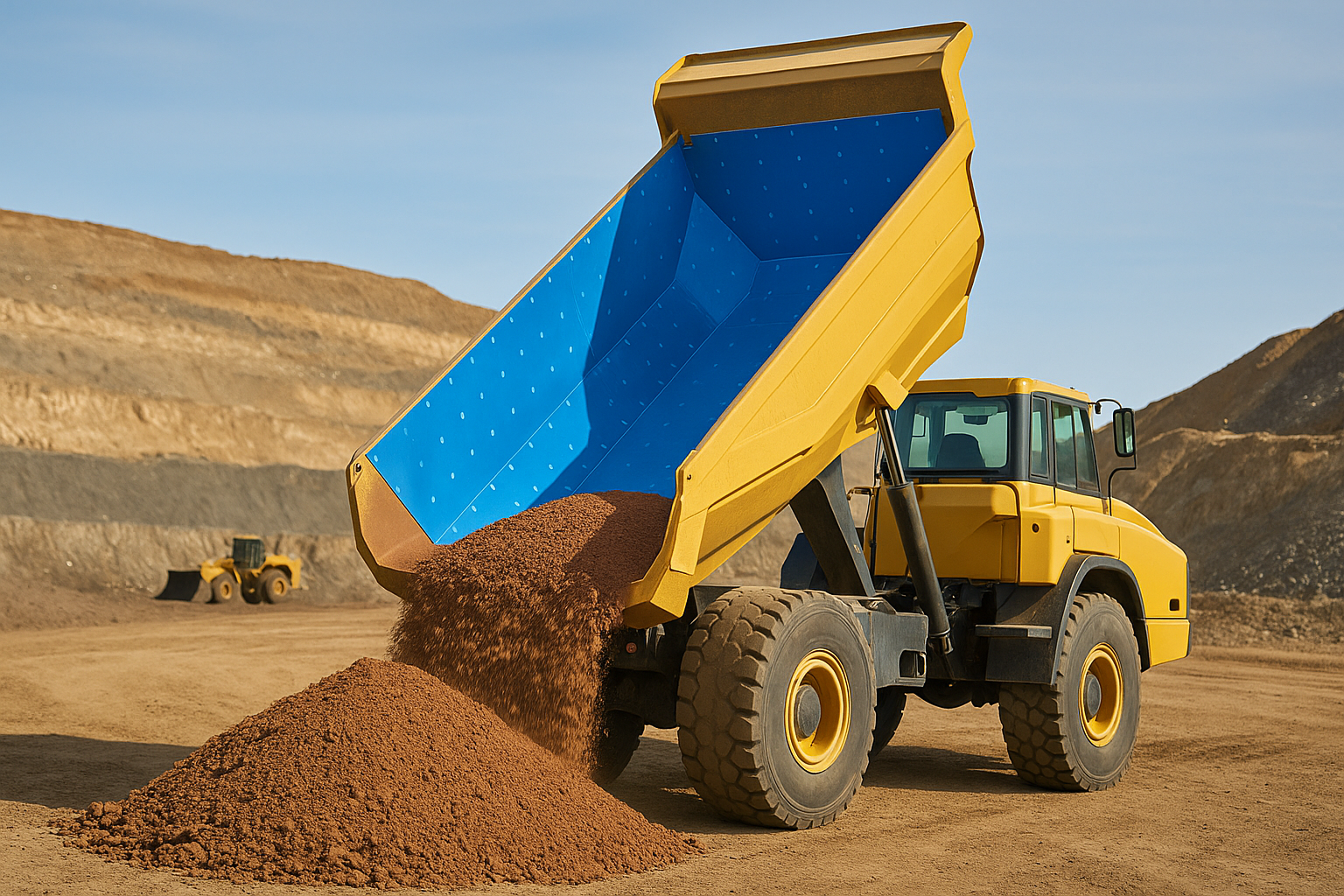At a glance
- Failing to consider how materials flow during tipping can lead to carryback, unsafe tipping angles, and reduced fleet efficiency.
- Choosing the wrong liner material or thickness accelerates surface wear, increases maintenance intervals, and compromises load handling.
- Focusing only on upfront costs often leads to frequent liner failure, unplanned downtime, and long-term productivity losses.
- Ignoring haul cycles, site-specific loading conditions, or bypassing expert input increases the likelihood of poor liner performance and early failure.
Selecting the right truck body liner is a key operational decision that affects wear rates, load flow efficiency, and overall fleet performance in mining environments.
Mining fleets regularly handle a wide range of materials, from moisture-rich clay to high-density, abrasive ore. When the liner isn’t matched to the material profile, it can cause carryback, impact damage, inefficient tipping, and even safety hazards such as rollover risk.
However, many fleet operators make preventable mistakes by choosing liners based solely on price without conducting proper research on site-specific factors or aligning the liner with the load characteristics and tipping cycle. These missteps can result in higher maintenance costs, reduced productivity, and costly downtime.
This article covers the most common mistakes mining fleet managers make when selecting truck body liners and highlights how they can be avoided.
Ignoring Material Flow Characteristics
One of the most common mistakes is overlooking how specific materials behave during loading, transportation, and tipping. Material flow is not consistent across load types; it is heavily influenced by moisture content, particle size distribution, cohesiveness, and compaction.
Loads such as wet clay, soil, coal, and iron ore are very common in mining. These materials are prone to sticking to the truck body, causing material hang-up and incomplete load release.
When material sticks, operators may need to tip at steeper angles or manually release the load. Manual intervention increases cycle times, raises fuel use, and exposes crews to potential safety risks.
Mining fleet operators can easily avoid these problems. First, it’s essential to select liners that offer high material release performance, especially for cohesive or saturated loads. Non-stick liners, such as OKUSLIDE® Premium Blue, significantly outperform traditional steel or aluminium trays by promoting fast and predictable material release. For instance, OKUSLIDE ® is up to 60% more slippery than aluminium and 70% more slippery than steel under similar conditions.
The non-friction surface of OKUSLIDE® liners reduces material hang-up, allowing for safer and more efficient tipping across a wide range of mining materials.
Read More: Different Applications of OKUSLIDE Bed Liner in the Mining Industry
Choosing the Wrong Liner Material
A common and costly misstep in mining operations is selecting a liner material without properly accounting for the demands of the haul. There’s no one-size-fits-all solution when it comes to body liners. The ideal liner material depends on what you’re hauling, how it behaves, and how your tray is configured.
Materials like steel, rubber, and polyethylene all perform differently under pressure. Steel trays may seem like the toughest option, but they often underdeliver when it comes to sticky or abrasive loads. Corrosion is another issue, and their low-slip surface usually means operators need to tip higher just to get the load moving. Rubber liners absorb impact well, which is useful in certain conditions, but they tend to wear out fast when exposed to sharp rock, dense fines, or repeated heavy tipping.
That’s where OKUSLIDE® comes in. These liners are made from a non-stick UHMWPE (Ultra High Molecular Weight Polyethylene) formulation designed to combine low surface friction with excellent abrasion resistance. They work especially well in environments with wet, clingy materials or high wear rates, helping reduce carryback and surface damage while improving flow.
When the liner material doesn’t match the job, fleets end up dealing with premature wear, more frequent cleanouts, and unexpected downtime. The smarter move is always to match the liner to the material. Understanding what you’re hauling and how it moves is key to getting the best performance over time.
Read More: Making the Right Choice: Selecting Liner Materials for Your Fleet’s Requirements
Overlooking Liner Thickness and Load Conditions
Fleet managers sometimes assume that a standard liner thickness will perform effectively across all loading conditions. In reality, using a standard liner can lead to premature wear, structural damage, and costly downtime. Liner thickness must be selected based on the material’s bulk density, particle impact energy, and haul frequency.
For example, heavy materials such as iron ore impose high dynamic loading on the liner during loading and transportation. If the liner is too thin, it can crack, deform, or wear unevenly under this weight and pressure. These surface defects can trap material, further reducing liner performance. On the other hand, using unnecessarily thick liners can add weight to the truck, reduce payload capacity and increase fuel burn per load.
OKUSLIDE® liners are available in a range of thicknesses to suit different haulage demands, from light overburden to high-impact ore transport. They are available in thickness profiles from 6 mm up to 40 mm sheets, depending on site requirements. That said, the most commonly used liner option is 12.7mm, or half an inch in thickness, which suits most mid-weight mining applications and load cycles. Selecting the optimal liner thickness helps enhance durability and performance without sacrificing fuel efficiency.
Focusing Only On Upfront Costs
Another common mistake mining fleet managers make is prioritising cheaper options. While low-cost liners may offer immediate savings, they frequently result in higher costs as they typically wear out faster and require more frequent maintenance, all of which quickly outweigh the initial savings.
These hidden costs can add up. Lower-quality liners are more prone to carryback and material sticking, which slows down load cycles and reduces equipment utilisation. Inefficient load release can also lead to increased fuel consumption over time.
When comparing liner options, it’s essential to look for quality and consider the total cost of ownership rather than just the purchase price. This includes liner lifespan, maintenance frequency, safety performance, operational efficiency, and the cost of unplanned downtime.
OKUSLIDE® liners are engineered for long-term durability, reliable material flow, and reduced maintenance requirements, helping fleets minimise these hidden costs and protect profitability.
Overlooking Operational Environment and Load Cycle
Mining conditions are rarely consistent across sites. Each operation presents its own set of challenges, whether it’s abrasive fines, constant moisture, or long-haul routes that strain equipment over time. Overlooking these operational realities when selecting a truck body liner can lead to premature wear and underperformance.
Take coal mines, for example. Loads tend to be lighter but carry high moisture content, making material release a challenge. In these cases, liners with excellent low-friction properties are essential to prevent material hang-ups. In contrast, iron ore operations demand a completely different approach. Liners must withstand heavy, high-density loads and persistent abrasion.
Other site-specific variables like haul distances, loading frequency, and weather exposure all influence how a liner performs over time. Ignoring these factors often results in mismatched liners that wear too quickly or fail to support efficient tipping.
Taking the time to assess your site’s actual loading cycles and environmental conditions helps ensure you select a liner built for your operation—one that holds up in the field and delivers reliable, long-term performance.
Failing to Seek Expert Guidance
Even within the same sector, no two fleets or operations are identical. Each requires a tailored liner solution. This means that selecting a liner requires expert advice. Yet many mining fleet managers make selection decisions without consulting specialist advice. This often leads to liners that are mismatched to the load type, poorly installed, or not fully optimised for the operational environment.
Consulting with liner experts allows mining fleets to avoid costly selection errors. They can also advise on correct installation techniques, which are essential for securing a proper fit and maximising liner service life.
OKUSLIDE® provides mining-focused consultation to help fleets select the right liner solution. Our decades of experience help reduce trial-and-error costs and ensure the liner performs reliably under the specific wear and flow demands of your site.
Read More: Why OKUSLIDE® Is a Game-Changer for the Excavation Industry
Choosing the right truck body liner isn’t just about making a purchase; it’s a long-term decision that affects reliability, safety, and operating costs across your mining fleet.
If you’re ready to improve material flow, reduce downtime, and choose the right liner for your operation, feel free to reach out to us. OKUSLIDE® offers expert advice and customised liner solutions for your fleet.



